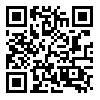BibTeX | RIS | EndNote | Medlars | ProCite | Reference Manager | RefWorks
Send citation to:
URL: http://hakim.tums.ac.ir/article-1-955-en.html
Darvishpoor Kakhki A1 * (PhD), Abed Saeedi J2 (PhD), Delavar A3 (PhD), Saeed-O-Zakerin M4 (PhD)
1 Department of Medical and Surgical Nursing, School of Nursing and Midwifery,
Shaheed Beheshti University of Medical Sciences, Tehran, Iran
2 Department of Medical and Surgical Nursing, School of Nursing and Midwifery,
Shaheed Beheshti University of Medical Sciences, Tehran, Iran
3 School of Psychology, Allameh Tabatabaie University, Tehran, Iran
4 Department of Community Health , School of Nursing and Midwifery,
Shaheed Beheshti University of Medical Sciences, Tehran, Iran
Abstract
Introduction: As a worldwide phenomenon, aging has an adverse effect on Health-Related Quality of Life (HRQoL) of elderly people. Developing measurement instruments are necessary for measuring HRQoL. The objective of this study was to develop an instrument for measuring the HRQoL of elderly people.
Methods: Development of the EHRQoL instrument was made up in three stages including: 1) Concept definition 2) Items selection and 3) Psychometrics properties (validity and reliability) of EHRQoL. The first and second stages were including literature review and semi-structured interviews with the elderly. The third stage included assessments of contents validity, face validity, construct validity (factor analysis), criterion-related validity (concurrent validity), internal consistency (alpha Cronbach) and stability (test-retest reliability) of elderly people. In this stage, 400 elderly participated in the study based on random sampling method.
Results: The HRQoL of elderly people was defined as elder people perceptions of absence of disease and treatments, autonomy, empowerment, healthy mind, family integrity, social engagement and spiritual well-being. The EHRQoL was developed in 121 items within five-pointy likert scale. After content and face validities, 105 items remained in the instrument. The results of factor analysis revealed 50 items with six factors: social engagement, not being sick, healthy mind, spiritual well-being, autonomy and family integrity. The results of criterion-related validity revealed linear, positive and significant relations between the HRQoL and criterion instrument. The results of internal consistency and alpha Cronbach revealed reliability coeffients of 0.83-0.96 for the EHRQoL.
Conclusion: The EHRQoL with 50 items in five-point likert scale is a valid and reliable instrument for measuring HRQoL of elderly people.
Key words: i nstrument development, health-related quality of life, health, aging, Iran
Please cite this article as follows:
Darvishpoor Kakhki A, Abed Saeedi J, Delavar A, Saeed-O-Zakerin M. Instrument Development to Measure Elderly Health-Related Quality of Life (EHRQoL). Hakim Research Journal 2012 15(1): 30- 37.
* Corresponding Author: Department of Medical and Surgical Nursing, School of Nursing and Midwifery, Shahid Beheshti University of Medical Sciences, Rajaie Heart Hospital, Crossing of Niayesh Highway and Valiasr Avenue, Tehran, Iran.
Tel: +98- 21- 88655366, Fax: +98- 21- 88202518, E-mail: darvishpoor@sbmu.ac.ir, darvishpur@yahoo.com
Received: 2012/05/6 | Published: 2012/04/15
| Rights and permissions | |
 |
This work is licensed under a Creative Commons Attribution-NonCommercial 4.0 International License. |





